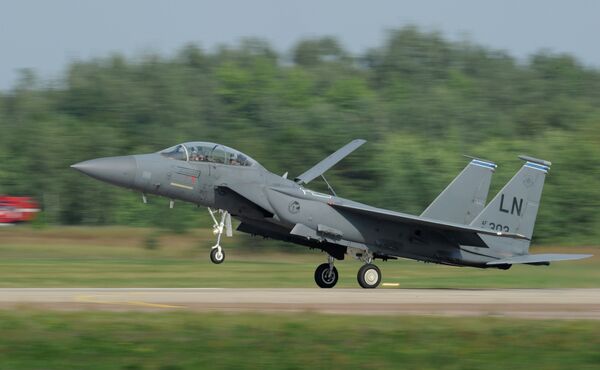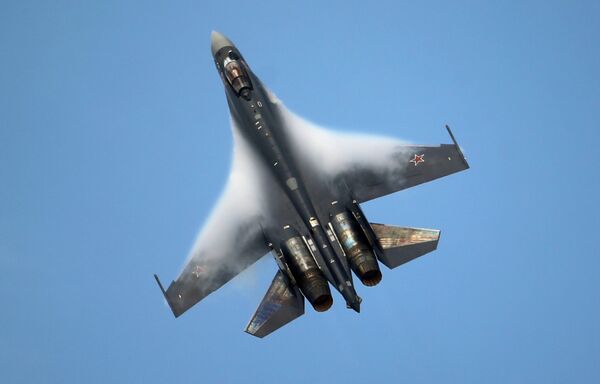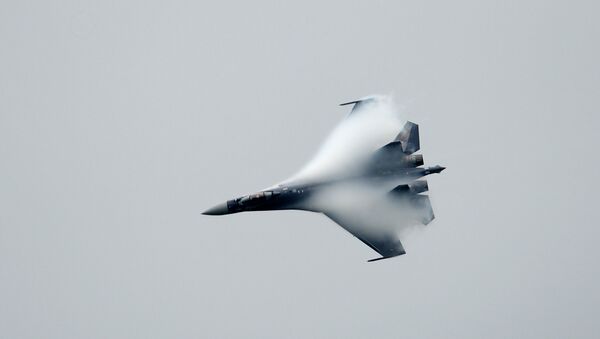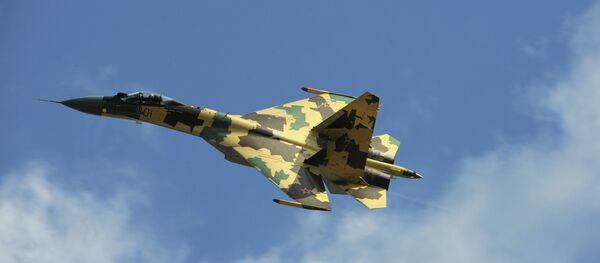The US seems to be losing its presumed air superiority.
Its F-15 Eagle, which was believed to be able to “penetrate enemy defense and outperform and outfight current or projected enemy aircraft", seems to be losing its ground, according to the US magazine The National Interest.

The outlet has come up with a comparative analysis of the F-15 and Su-35 and concluded that if the two met in a face-to-face battle, it wouldn’t be “the one-sided turkey-shoot the Air Force has gotten used to”.
As it turns out, the Su-35 has lots of areas where it is able to outperform America's “mighty jet”.

“The real dilemma is that the Su-35 and the current day F-15 Eagle are comparable — and that’s what is worrisome for the US Air Force,” it reports.
“The service is used to fighting adversaries where it has a huge technological advantage — against the Su-35 that deficit does not exist and the Flanker-E even has some advantages over the Eagle. Overall, if all things were equal, even a fully upgraded F-15C with the latest AESA (active electronically scanned array) upgrades would have its hands full versus the Su-35.”
According to the Magazine, the Su-35 Outperforms the F-15 in Terms of Thrust:
Maneuverability at a Low Speed is Also an Area of Advantage for Russia’s Su-35:
“Where the Su-35 does have an insurmountable edge is at low speeds. The Flanker-E has three-dimensional thrust vectoring and is unbelievably maneuverable at low speeds.”
However, the magazine adds, “a lot of it is going to come down to pilot skill and, frankly, luck”:
In terms of the built-in equipment, the F-15C and the F-15E seem to hold their ground. However, the Su-35 “does hold a fleeting advantage" for passive sensors, while the F-15 is yet to receive “a very capable” built-in infrared search and track system (IRST).
“At longer ranges, the F-15C and the F-15E still have the advantage over the Su-35 with their active electronically scanned array radars. The Raytheon APG-63 (v) 3 and APG-82 (v)1 on the two Eagle variants are still considerably superior to the Su-35S’ Tikhomirov IRBIS-E phased array radar. The Su-35 does hold a fleeting advantage for now for passive sensors since it has a built-in infrared search and track system (IRST), but the F-15 fleet will receive a very capable IRST in the near future—nullifying the Flanker’s edge.”
The Flanker-E's Electronic Warfare Suite is Yet Another Area Where it “Holds the Edge”:
With all the above in mind, the outlet has finally found some ground to reassure itself that the danger is not that imminent. It hopes that the Su-35's advantages are going to play against the F-15, only if “the United States would be fighting a war against Russia or some other great power — like China”
“That’s not likely to happen,” it wishfully asserts.
"What's more likely to happen is that a F-15 would run into a Su-35 operated by some Third World despot. The pilots are not likely to have the training, tactics or experience to fight against an American aviator with a realistic chance of winning,” it reassures itself.
“Some random Third World power is not likely to be able generate a fully operational jet much of the time. Furthermore, other than Russia and China, a potential adversary is not likely to have an AWACS (airborne early warning and control system) or full ground controlled intercept capabilities—which further hampers the enemy.”

The Sukhoi Su-35 Fighter
The Sukhoi Su-35 fighter is a single-seat twin-engine super-maneuverable multirole fighter, built by the Komsomolsk-on-Amur Aircraft Production Association in Russia's Far East and designed by Sukhoi, which has a contract to deliver 48 of the planes to the Russian Air Force before the end of 2015.
The Su-35 is known as a 4++ generation aircraft, which employs fifth generation technology, rendering it superior to other fourth generation fighters currently under development. The Su-35 is also a more reliable option than other fifth generation planes which are in their development phase, the best known of which are the US F-35, the Chinese J-20, and the Sukhoi PAK-FA [T-50].




